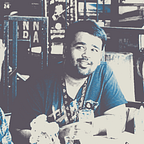Infinity Graph + Portals 2.0
The Infinity Graph
As graphs become more complex, they are notoriously difficult to make sense of and even worse to manage — especially if you like keeping your nodes neatly organized. The Infinity Graph is designed to separate concerns. You can create multiple graphs and create different portions of your terrain in different graph. This is something we refer to as “task based organization”.
For example, here is a complex graph that could be organized much better. Also, overlapping connections can make even clean graphs look messy.
First, this graph was separated into its distinct “tasks” on the same graph surface using the new Portals 2.0 mechanism (more on this below). As soon as you see them separately, they don’t look complex and are much easier to follow.
Then we create a tab for the different group. Each graph tab can have its own name, color, and important graphs can be “pinned” which means they appear ahead of other tabs. Selecting a group of nodes and selecting the command “Move to graph” allows you to move the nodes to the desired graph.
Portals 2.0
Portals have existed since the public release of Gaea. They are meant to help you “tunnel” through the graph without needing to create long, unsightly connections. You can even right-click a node and interject a portal (which means it replaces existing connections to that port).
This was well and good, but still not as sleek and effortless as we wanted it to be. I kept going back to the drawing board saying we need to make it as simple and “mindless” as connecting two nodes.
The Infinity Graph is worthless without portals, and having clunky portals would mean users would not be able to take advantage of the multiple graphs. So after several UX brainstorming sessions, we finally came up with a new portal mechanism that fulfilled all the requirements.
No more physical portals!
Portals are no longer an “object”, they’re a “state” of a node’s port. If you drag-out a connection from any “out” port, you will get an option to make it into a Portal. When a port is a portal, the port’s shape changes to denote its new state.
Similarly, to connect any other node’s “in” ports to a Portal, just drag-out a connection and select any available portals from the list. You can also drag and drop a connection to the portal if it is in visible range on the graph. You can also select a connection and convert it to a Portal based connection.
If you move a bunch of nodes to another graph, and connection that you leave behind will be turned into a Portal based connection allowing you to freely connect nodes across graphs.
Infinity Graph and the new portals will be part of the first build of Gaea 1.2.0, which should hit the Bleeding Edge branch next week, and the Production Ready branch by mid/late January.
More information coming soon.
